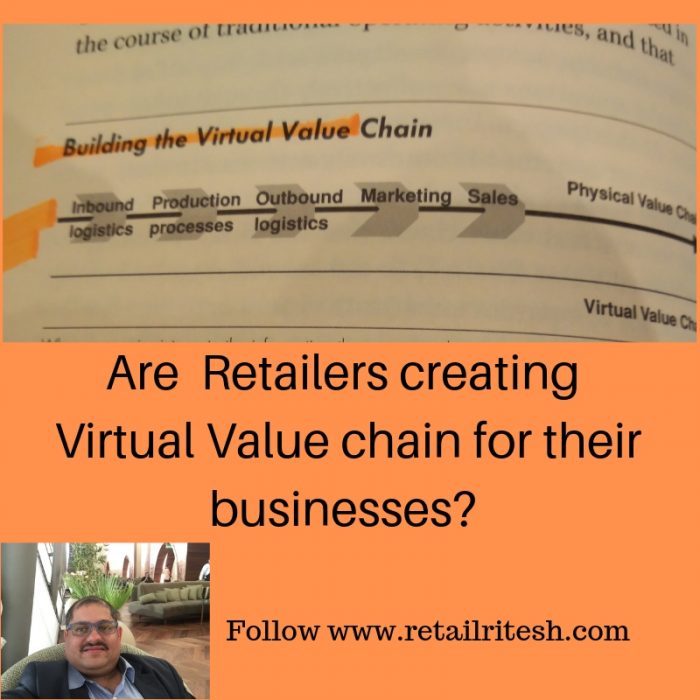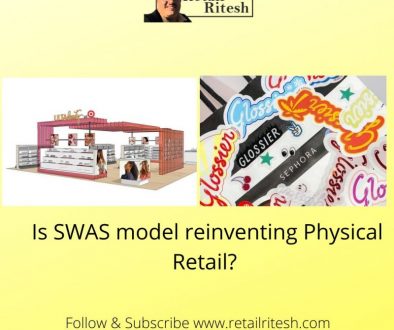Are Retailers creating virtual value ecosystem?
“Are retailers in the middle east region, creating a virtual value ecosystem?” was the question asked to me recently in one of the retail forums wherein I was co-presenting.
At first, I complimented the questioner for asking such a great question and opened the question to the audience.
The question got the audience engaged and there were many responses from the audience which satisfied the questioner.
I went home with the question in mind, “What is the virtual value ecosystem?; I had earlier studied Porter’s value chain formats but was not sure about the virtual value ecosystem.
This article summarizes my learnings from various online research articles and reading case studies from the Harvard business review.
What is the Virtual value chain?
Every business today comprises of two worlds- a physical world of resources that managers can see and touch and digital/virtual world which is made of information and data.
The later gives birth to eCommerce
It is the amalgamation of “Marketplace” and “Marketspace” to create a virtual value chain or ecosystem.
F&B retailers mainly those of quick-service restaurants (QSRs) take customer orders both from physical stores as well as from online customers coming through zomato, food panda, talabat, etc.
Value Ecosystem/ Chain Model
The value chain is a model that describes a series of value-adding activities connecting a company’s supply side (raw materials, inbound logistics and production processes) with its demand side (outbound logistics, marketing, and sales).

Retail Demand planner or Merchandising manager often uses information from their retail point of sales system i.e. inventory – store wise and warehouse wise, inventory in order or in transit to control stock replenishments in their stores.
However, they rarely use information itself to create new value for their customers.
That’s what the paradigm change is brought by the Virtual value chain ecosystem.
Let me explain using an example
FedEx or DHL (now copied by almost all logistics companies) allow their customers to track their order on their website.
Now the customer could locate their parcel, orders and also get an alert as soon as the courier is delivered and the name of the recipient is also shared.
This service comes as value addition or as free of cost, thus FedEx has created added value in their delivery process and thus loyalty of their customers.
Learn as to how luxury brands are disrupting accounting practices, read here.
The Big data
Retail companies invest in ERP systems for their managers to plan, execute, control and evaluate results with greater precision and speed.
Technology helps in creating a virtual value chain offering for its customers.
Have you ever seen a merchandiser of the FMCG brand working in a hypermarket?
Ever wondered as to why the salesman/merchandiser of an FMCG brand carries a computing device (nowadays a tablet) while visiting one hypermarket to another.
They collect information on the sales of the products, inventory levels, store by store and feed it electronically.
They also capture their competitor’s activities about sales and promotions, new product launches, etc in select locations.
By combining field data with information from each stage of the value chain, brands can now better determine levels of inbound supplies of raw materials for their production facilities, plan for their truck coverage in an optimal fashion for efficient coverage, plan for sales offers to combat their competition in a more efficient manner.
How retail companies could use the virtual value Ecosystem?
The virtual value chain redefines the economies of scale.
Retailers today can optimize their inventories, shipping lead times, margins and promotions (markdowns of slow-moving inventories) much in advance.
Retailers who use omnichannel (i.e. both physical retail and eCommerce) can provide the access to their customers to track their online purchases or even the purchases made through the online but pick up from the designated store ( Buy online Pick up at store option).
As a result, Customer not only gets visibility of their order but also get their complete purchase history.
Do you know the biggest problem with millennials?
Converting the gigabytes of data into useful information is the biggest challenge in today’s time.
Retailers who can de-code this gap would emerge as winners.
Do you want to implement a virtual value chain ecosystem for your retail business? Feel free to reach out to me on riteshmohan@yahoo.com
References: HBR strategies for growth, retail gazette, Inc.
About the author:
Ritesh Mohan is a passionate retail professional with over 20 years in the Retail sector, handling some of the biggest brands in beauty, fashion and fragrances retail & FMCG sector. He has been instrumental in the growth of some of the regional brands as well in the Middle East region. Ritesh specializes in Retail management, Product development, and Brand Management, Retail Operations, Sales Management, and Franchising Management. He strongly believes in empowering business owners with his wisdom & experience of around two decades in the industry.





Are you a value innovator in your industry? Learn how to scale your business 10X using the Value Innovation concept. - Retail Ritesh
July 24, 2019 @ 9:20 am
[…] Retailers in the middle east, creating a Virtual Value chain? Click here to find out […]